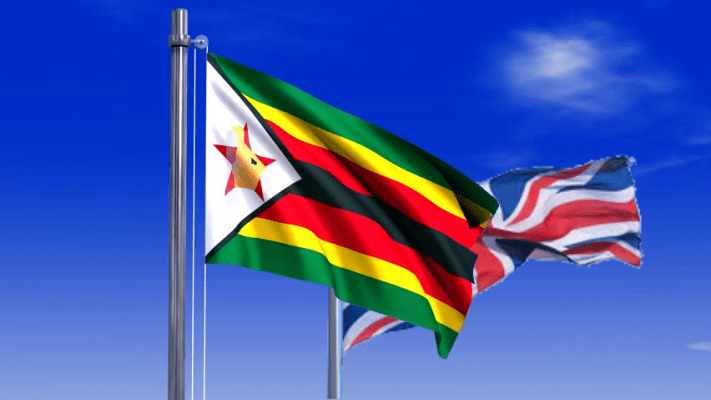Underemployment, a driver of poverty in Zim
According to ZimStat, in its 2023 Second Quarterly Labour Force Survey, 60,6 percent of the paid employees where earning less than $100 000. Using the June average exchange rate of approximately $5 000 per US$1, it means the majority of employed people are earning roughly US$20.Only 6,4 percent of the employed people are earning above $550,000 or US$110.
With a total of 79,3 percent of the population employed in Zimbabwe according to Zimbabwe National Statistical Agency (ZimStat), the living standards of the populace are not reflecting such a milestone due to underemployment.
Underemployment is the underuse of a worker because a job does not use the worker’s skills, is part-time, or leaves the worker idle.
In its 2023 Second Quarterly Labour Force Survey, ZimStat says the unemployment rate in Zimbabwe is 19,7 percent.
The country is a member of the International Labour Organisation and subscribes to internationally acceptable principles and definitions of labour market indicators.
ZimStat emphasises the official definition of unemployment because of its international comparability which says the labour force comprises persons 15 years and above.
When ZimStat conducts household-based surveys to collect data on unemployment, first, it asks if one has done any work for pay or profit in the last seven days. Secondly, it seeks to ascertain whether one tried to find a job or start a business in the last 30 days and, thirdly, ZimStat asks if the person is able to start working within the next 14 days if an opportunity arises.
However, the quality of employment has meant the majority of employed people have remained poor.
According to ZimStat, in its 2023 Second Quarterly Labour Force Survey, 60,6 percent of the paid employees were earning less than $100 000. Using the June average exchange rate of approximately $5 000 per US$1, it means the majority of employed people are earning roughly US$20.
Only 6,4 percent of the employed people are earning above $550 000 or US$110.
According to the survey, the manufacturing industry had the highest rate of persons in time-related underemployment at 31,3 percent followed by construction industry at 30,8 percent. At least 68 percent of the 21 sectors surveyed reported that a minimum 20 percent of their workforce was underemployed.
Development economist Dr Prosper Chitambara, believes the working class is suffering from high informality of the economy which leads to lower wages.
“I think the economy is highly informal leaving most workers at the mercy of the employer, so we need an economy that continues to grow so that we get to increase decent job opportunities. For all this to happen we need to increase the productivity levels of our workforce so that the economy grows to sustainable levels,” he said.
Economic analyst, Namatai Maeresera added that; “As a country, we are in deep waters of underemployment due to years of industrial stagnation which needs the government to stimulate production which will in turn create demand for goods and higher wages.
“This underemployment has led to professionals who are dejected and with low productivity giving us a cycle of low wages and subjecting the employees to live below the poverty datum line hence being poor in the end.”
Unemployed youths who were not in education or employment or training (NEET) for the 15 years to 24 years accounted for 51,6 percent of the population and 15,9 percent of the 15 years to 34 years’ category.
Labour specialist, Peter Mutasa, said the situation needs to be looked into as it is leaving most of the youth doing drugs and being a burden to their families.
“If you look at those numbers you will see that a sizeable number of youths are unemployed and are engaged in nothing, hence the need for empowering the vocational centres we have and also have venture capital firms that empower these youths because they are contributing much to poverty in the country as dependants,” Mutasa said.
Average monthly incomes across industries ranged from $41 659 in activities of households as employers of the domestic personnel industry to $677 525 in the electricity, gas, steam and air conditioning supply industry.
According to the agency’s poverty survey, a single person in June needed $69 941 for food only and their total consumption poverty line was $91,172 which is already more than a single person’s income of three categories surveyed by ZimStat in the second quarter.
Taking the agency’s average family size of four people according to the 2022 population census, their total consumption poverty line was $455 860 meaning 14 percent translating to three categories of the 21 categories had an individual who earned enough to cater for their family as a sole breadwinner.
Chitambara believes that the high level of informal employment is associated with poverty because of the low-income levels and low productivity associated with the employment level.
“We need to expunge or reduce the level of informality, but in order to do so we need to deal with factors such as tax reforms, business reforms and educational reforms, which means we need a comprehensive cocktail of reforms in order to unlock the sustainable growth needed going forward,” Chitambara concluded.
Although it has declined since its peak of 2020, extreme poverty remains high in the context of cyclical agricultural production and elevated food prices.
According to ZimStat the rate of extreme poverty in Zimbabwe fell slightly to 42 percent in 2022, down from 43 percent in 2021.
This is according to the results of the latest high-frequency telephone survey, known as the Rapid-Poverty Income Consumption and Expenditure Surveys (PICES) carried out by ZimStat between December 2022 and January 2023.
According to the survey, the proportion of Zimbabwe’s population facing severe food insecurity dropped from 27 percent in July 2020 to 9 percent during the December 2022-January 2023 period.
The African Development Bank in its country outlook in March wrote; “The extreme poverty rate was estimated at 44 percent in 2022, and the Gini coefficient was 0,503 in 2023.”
The Gini coefficient, is a measure of statistical dispersion intended to represent the income inequality, the wealth inequality, or the consumption inequality within a nation or a social group measured between 0 and 1, with the higher it is, the higher the inequality.-ebsinessweekly










